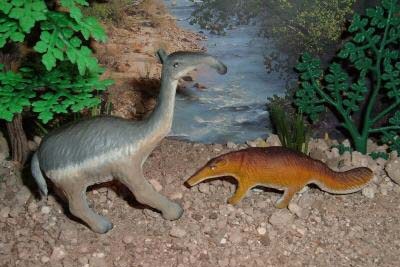
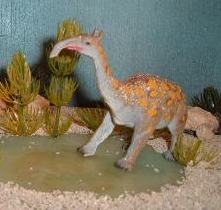
Classic Prehistoric Mammals
From the Dinosaur Collector
Updated 072406
The unique mammals of South America are not well studied. South America was isolated for about 55 million years and evovled distinctive animals, most of which became extinct only in the last few million years. The original fauna was composed entirely of marsupials, edentates (the ancestors of modern sloths, anteaters, and armadillos), and condylarths (ancient ungulates, like Macrauchenia). For more than 44 million years, these original stocks evolved on their own, giving rise to 6 distinctly South American orders, 25 families, and numerous species. But South Americaâs isolation, awas finally eliminated late in its history by the formation of the Panamanian land bridge. The continental link spurred colonization by North American and Eurasian forms, which rather quickly destroyed the original fauna. All herbivores native to South America became extinct following the Pliocene-Pleistocene invasion from North America. Not one species survived. One group of herbivores almost made it, dying out only in the early Pleistocene. Macrauchenia missed being part of the modern South American fauna by a mere few million years. Creatures like Macrauchenia represent the forces of evolution on islands and island continents where a clean slate put togehter surprises. Similar conditions prevail following mass extinctions, thw empty slots spur evolutionary radiations.
 |
 |
JARU Macrauchenia custom painted by Fred R. Hinojosa. Macrauchenia was produced by Lido and MPC in their prehistoric Mammal lines. JARU still produced a version but after WWPB Schleich produced a figure and more recently Safari Prehistoric Toob produced one.
Smilodon (Knife Tooth) was over 6 feet at the shoulder. Specialized in the hunting of large herbivores the saber teeth were actually rather thin and fragile. How the teeth were used is speculative but one idea is there were use to pierce the thick hides and deliver the coup de grace. Smilodon populator was larger than it's relative in North America, Smilodon fatalis. Found in Argentina and Brazil It appears to specialized to hunt large plant eaters and there is some evidence it may have lived in groups like modern lions. Smilodon is probably the most widely produced Prehistoric mammal figure seen in toy lines and can be identified by three characteristics: these are the saber teeth, the short tail and the short hind limbs.
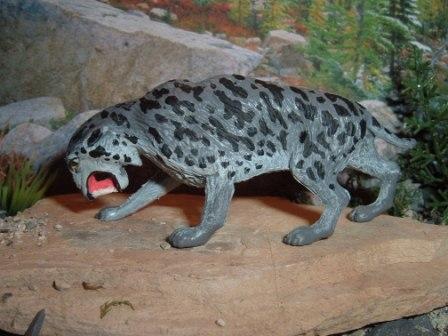 |
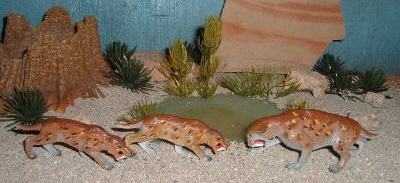 |
Recast Marx Smilodon, Tim-Mee and MPC Smilodon custom painted by Fred R. Hinojosa. Marx got the tail right but configured the body to make the limbs appear of equal length. Tim-Mee added mammals with its smooth set. The figure is flat and a little canine.
Armadillos and the Sloth are edentates and were originally restricted to South America. The family shares well-known features such as simple tooth structure and walking on the insides of the feet. Members of this family continued to prosper after the land bridge to North America was reestablished, spreading into the American Southwest and Florida. Megatherium (Large Beast),the largest of the ground sloth's, lived in South America and North America. At 18 feet and weighing 4 tons with boney nodules embedded in its skin like armor it must have been formidable prey.
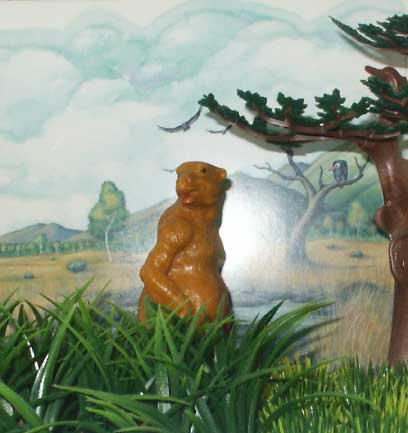 |
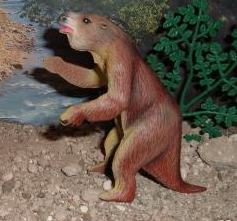 |
MPC Megatherium Miller Megatherium.
Glyptodon was from the Armadillo branch of the family. The largest were about the size of a Volkswagen. There are two general kinds of glyptodont: the ones with clubs on their tails and the ones without clubs. They are a mammal version of ankylosaurs Glyptodon (carved tooth) was preyed upon by the prehistoric Jaguars who attacked the front of the head piercing the skull. The glyptodont Doedicurus (pestle tail), had an armored tail which ended in a viciously spiked club, a weapon of defense. Megatherium was common throughout South America during the Pliocene and Pleistocene. With a length of up to 5-6 meters, they were larger and more heavily built than modern elephants! A closely related genus (Eremotherium) occurred in North America during the Pleistocene, but appears to have been largely restricted to the area that is now Florida.
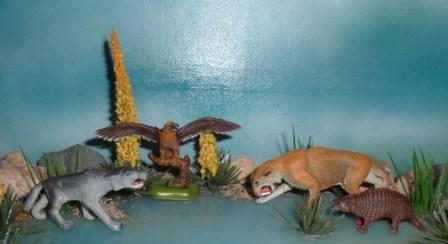 |
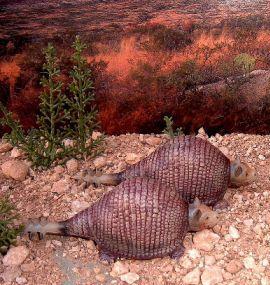 |
MPC Dire Wolf, Smilodon, Megatherium and glyptodon Doedicurus custom painted by Fred R. Hinojosa.
. Prehistoric Mammals have always been an after thought. Marx did three mammals, Miller also did three but MPC had six figures. Lido made 8 figures. Only recently have mammals first Bullyland then Schleich and most recently Wild Safari.
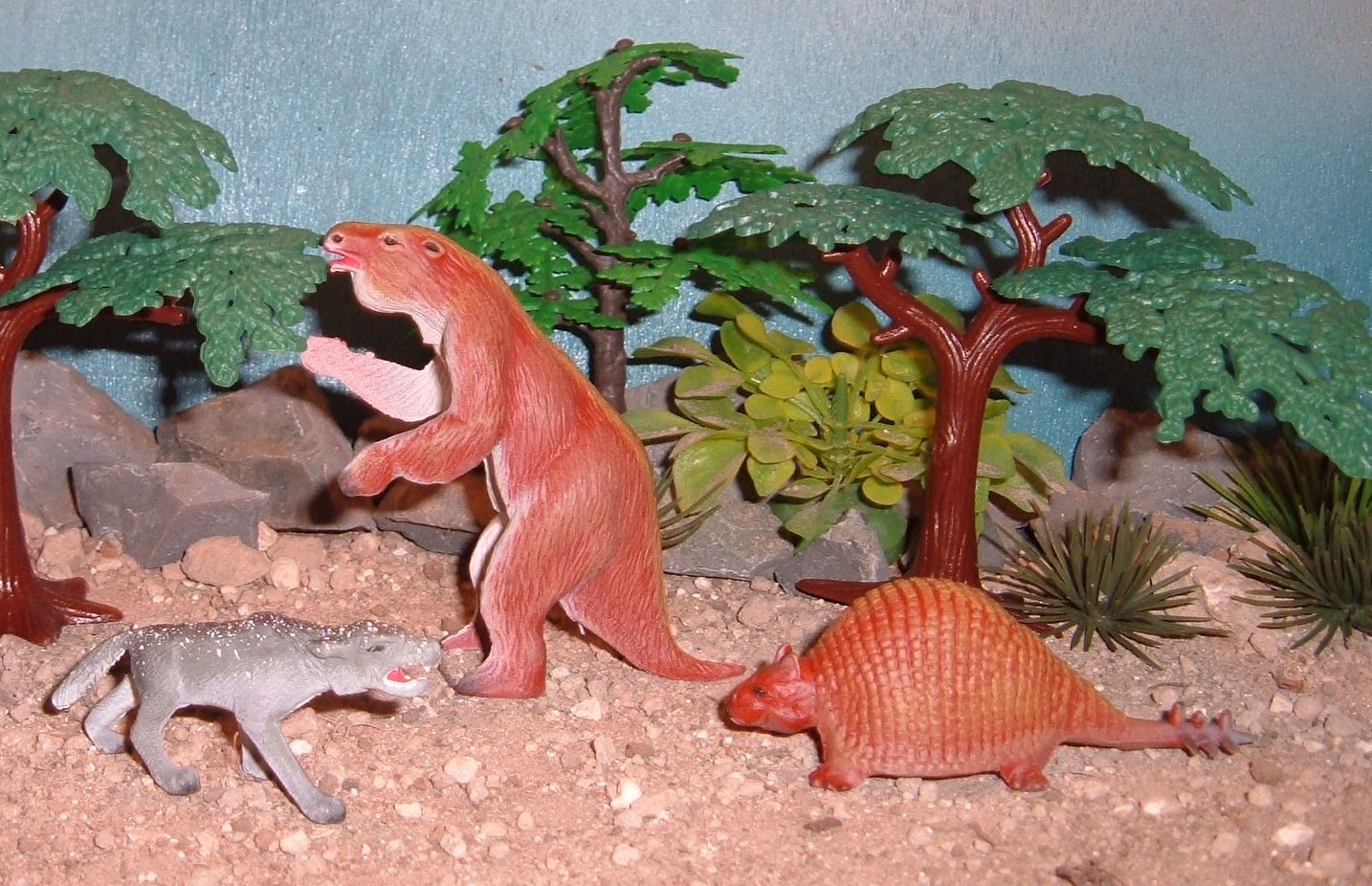
MPC Dire Wolf, Megatherium and Doedicurus custom painted by Fred R. Hinojosa.
?
?